
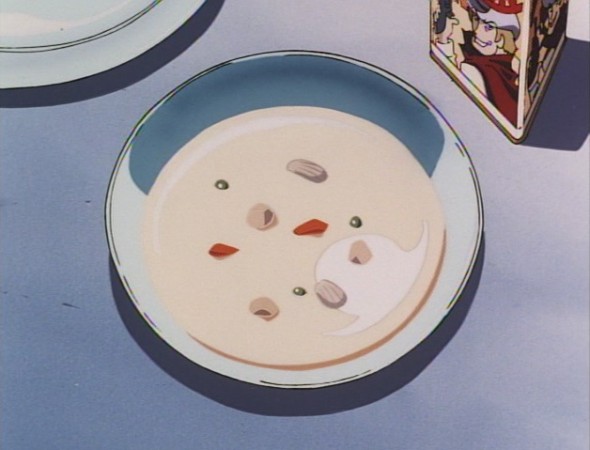
- …to Son-of-a-Gun. Stew, that is.
But what I like about this episode is that it exposes Spike as the assjack I always kind of suspected he was. Don’t get me wrong – I’ve grown quite fond of him over the course of this series. But when I go back and read my initial assessment of his character, it find myself saying, “Huh, that’s still all basically true. I guess he is kind of horrible.” We put up with the mopeyness, the hostility, and the irresponsibility, though, because he comes through in the clutch, and besides, he’s so damn cool it hurts. Well, “Cowboy Funk” is the episode where he loses his cool. Head back to that climactic fight scene again: we’ve seen Spike get beat up before, most notably by Pierrot in episode 20. We’ve never seen him made to look like a fool, though, which is what happens here when this totally bitchin’ jumpkick
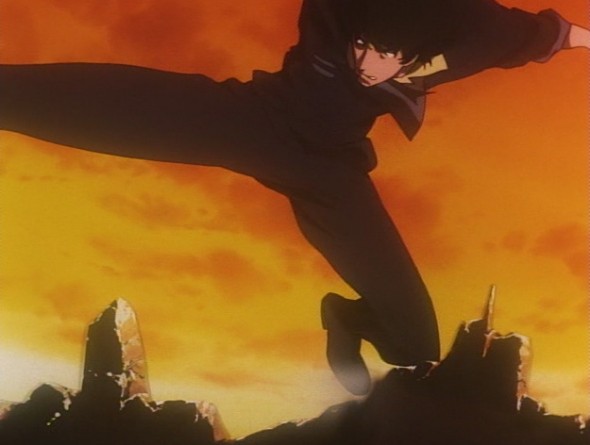
utterly fails to connect, and sets Spike up for the girder-to-groin action we saw further up the page. Even more damning is just how annoyed he is at Andy for biting his whole badass-bounty-hunter-with-a-pointy-nose-and-improbably-poofy-hair schtick. A big part of being cool is not seeming like you care about being cool, right? Well, with Andy around, suddenly Spike cares about being cool a WHOLE lot. And this makes him lame. Finally, there’s the end of the fight. Here, look at some more purty pictures – they’ll set the scene better than I could. (By the way, this awesome orange color scheme is used nowhere else in the episode. In fact, the rest of it is pretty much blue, making it the extended version of that one obnoxious high-contrast color scheme they use in every single movie poster nowadays. Bebop did it before it was lame, though.)
Yeah. So Spike doesn’t actually fall to his death here, but he’s lost the fight. Infuriated, he punches a wall… causing a major section of the building to collapse onto Andy. (Just in case this isn’t clear, this is a freak coincidence, not a clever use of the terrain.) But Andy doesn’t know that, so he surrenders, acknowledges Spike as the better man, swears that his days of dressing like a cowboy are over now that he’s met the real thing, hands Spike his hat, and literally rides off into the sunset.
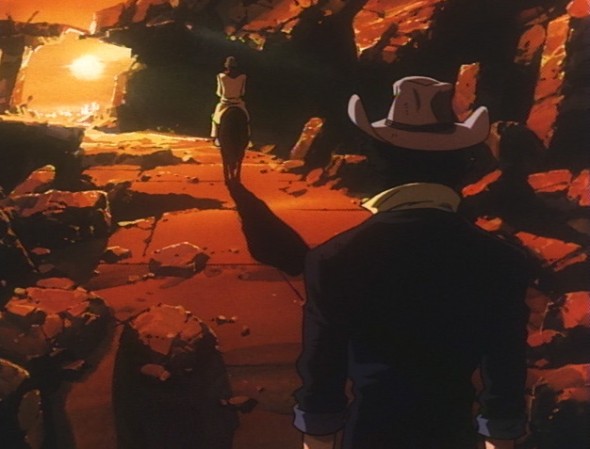
Spike’s final act of lameness is to try to pass this off as an honest win: in a few hours, he’s laying back on his couch with a plate of Son-of-a-Gun Stew (which before this, mind you, he had refused to eat), and explaining to Jet and Faye how Andy was never really in his league. (And never mind that he’s talking and eating around a bandage on his jaw, from where Andy basically punched it off.)
Interestingly enough, although this is quite clearly an instance of Spike being a self-satisfied asshole, it’s also one of the most recognizably human – and therefore, one of the most sympathetic – moments that he’s had on the show so far.
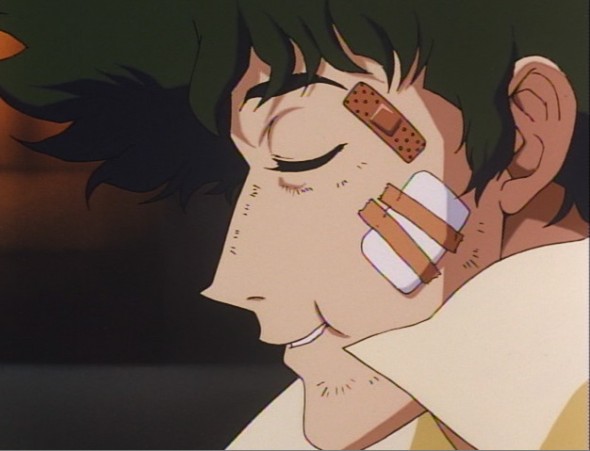
Heartwarming, innit? Now let’s talk about death.

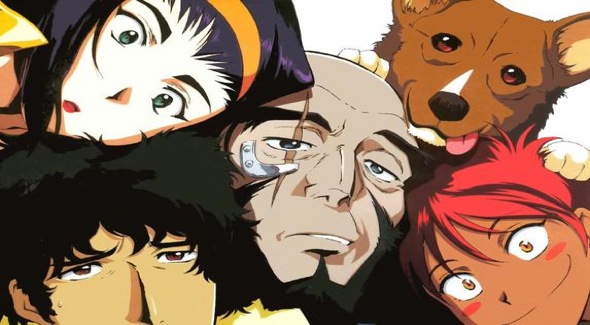
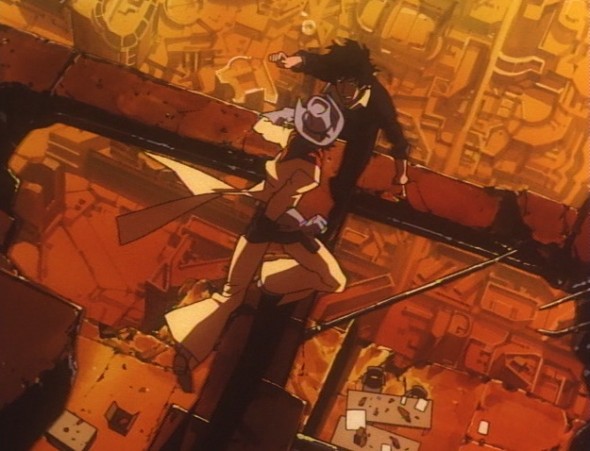
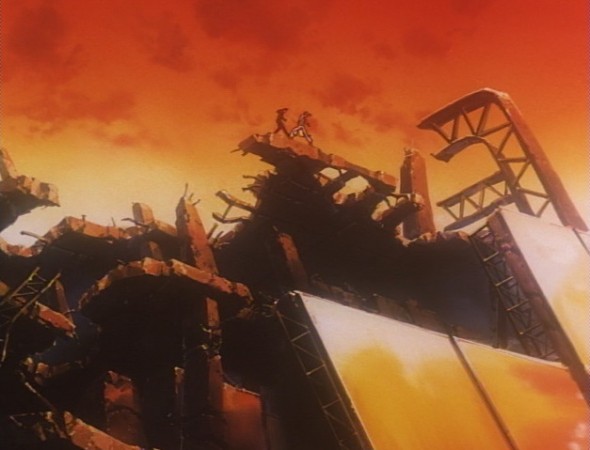
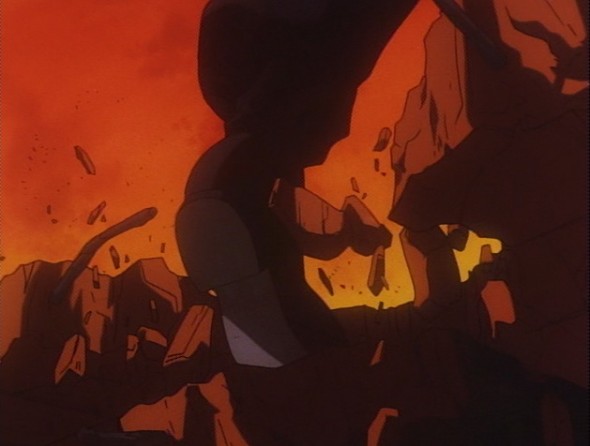
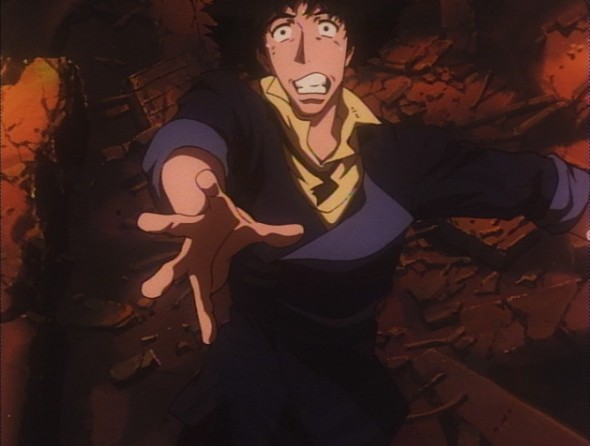
“By the way, this awesome orange color scheme is used nowhere else in the episode. In fact, the rest of it is pretty much blue, making it the extended version of that one obnoxious high-contrast color scheme they use in every single movie poster nowadays. Bebop did it before it was lame, though.”
I hope everyone is aware of this phenomenon. It’s quite striking. For an extensive gallery of examples:
http://www.slashfilm.com/2009/11/27/orangeblue-contrast-in-movie-posters/
Ah, I knew there was a gallery somewhere! I wanted to link to it but I couldn’t remember what website it was on. Thanks for that, Lee.
Although I’d call the trend more “damning” than “striking.” :-/
I can’t add anything here but I thought I would take out space and say that these articles are awesome.
Agreed. I love these articles and am really happy whenever a new one comes out.
8 pages?? F-yeah!
It’ll be a sad day when these are finished up and the series has been overthought. :D I hope you plan on doing the movie once the series is done!
One question I have about Spike’s “massive death wish.” It could be that, but I always figured Spike as a young guy to be an adrenaline junkie. He gets his thrills from dangerous situations. Unless that’s the same as a death wish. :D
I’ll probably do something about the movie… not sure quite what, though. I’ve been thinking a lot about how one could make Cowboy Bebop into a movie (because of the threatened live-action, all-Keanu-all-the-time remake), and I’m interested in how the show’s own creative team handled it. So one thought I had was to end my posts on the show itself with a list of dos and don’ts for a cinematic adaptation, and then watch the movie and see how it stacks up against that.
As for Spike’s death wish: I think at the beginning of the series, he comes off a lot more like an adrenaline junky (especially in the first episode, where he’s not interested in fighting Solensan until he realizes that the guy is nigh-indestructible), but that as the show goes on it seems more and more like he’s actually interested in finding his death, for a bunch of quasi-existential reasons. Before he goes off to fight Pierrot he actually says something like “Maybe this will finally be the one…” doesn’t he? He tries to play it off as a joke immediately afterwards, of course, but I don’t think we’re meant to believe him. I’ll go into this more in a future post, though. You bring up an interesting question.
MASSIVE SPOILER
*
*
*
*
*
*
*
*
*
*
The entire series is about death because, as we find out in the final series of episodes, Spike’s soul has basically been dead for years, and all that is left is for him to redeem his disgraceful life and die a Samurai’s death. Which of course he does.
Although, he’s marekd for death.
But, for real, the entire series is about redemption by chosing to die a good death.
In terms of Andy’s “death of cowboy identity”, what do you make of the end title reading “See You Space Samurai”? This might make the whole thing less a death than a transformation–Andy is still just as crazy, hokey and pseudo-cool as ever, he’s just swapped the superficial stereotype he’s imitating. (And even then, the cowboy stereotype arguably has a lot in common with the samurai one; you could argue that they’re similar archetypes.)
Anyway, awesome article!
I’ll see your “less a death than a transformation” and raise you a “what is death but a transformation?” When he hands Spike the hat and walks away, you’re supposed to think that his cowboy persona is dead (go ahead and put scare quotes around that if you want to). When he shows up as the samurai at the end, I find that it reads as a resurrection, or maybe a life-after-death, which amounts to pretty much the same thing.
The similarity of the cowboy and samurai archetypes is interesting, in that actual cowboys and actual samurai are about as different from each other as two groups of people have ever been. But in pop culture, they do seem to be functionally equivalent.